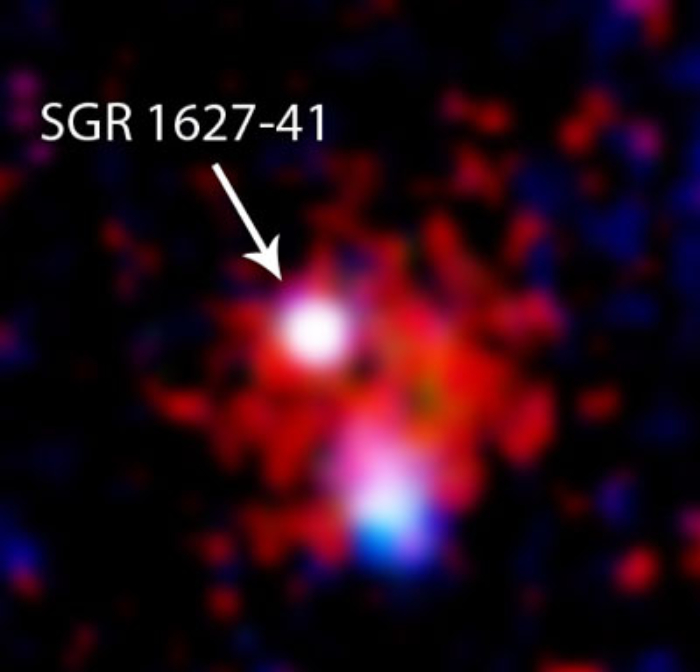
 Credit: P. Esposito et al. 2008; ESA
Credit: P. Esposito et al. 2008; ESA
Spinning Repeater
SGRs, or soft gamma-ray repeaters, are rapidly spinning neutron stars with intense magnetic fields. These objects have such strong magnetic fields, sometimes 1000 times stronger than "typical" neutron stars, that they are called "magnetars" by astronomers who study them. These objects are rare: only 5 SGRs are known, 4 in the Milky Way and one in the Large Magellanic Cloud. Because they're so rare, astronomers try to find out as much information about them as possible. An especially important quantity is the spin period, which can be used to tell how old the objects are, and gives clues to how they are born. Astronomers were able to measure spin periods for all but one of the five known SGRS, an object known as SGR 1627-41. Last summer, SGR 1627-41 flared to life, becoming bright in X-rays. Astronomers hoped to make sensitive observations of the spin period from X-ray pulsations with the XMM-Newton X-ray Observatory. But by the time XMM could focus on the star, the X-ray flaring episode was waning, making observations difficult. Thanks to XMM's excellent sensitivity, XMM was able not only to observe the star but to measure pulsations from it, which pinned down the spin period. The image above shows the X-ray image of SGR 1627-41 from the XMM-Newton observations. The spin period was determined to be 2.6 seconds, making it the second fastest rotating magnetar known. This spin period suggests that the magnetar is fairly young (a few tens of thousands of years old), but old enough to have slowed its rotation significantly. If it flares again astronomers plan to look at it again with XMM; hopefully, by measuring the change in the rotation rate, astronomers will be able to constrain how quickly the rotation is slowing, and to pin down the age of the magnetar.
Published: January 19, 2008
<
HEA Dictionary ● Archive
● Search HEAPOW
● Other Languages
● HEAPOW on Facebook
● Download all Images
● Education ● HEAD
>
Each week the HEASARC
brings you new, exciting and beautiful images from X-ray and Gamma ray
astronomy. Check back each week and be sure to check out the HEAPOW archive!
Page Author: Dr. Michael F. Corcoran
Last modified Monday, 26-Feb-2024 17:23:44 EST


